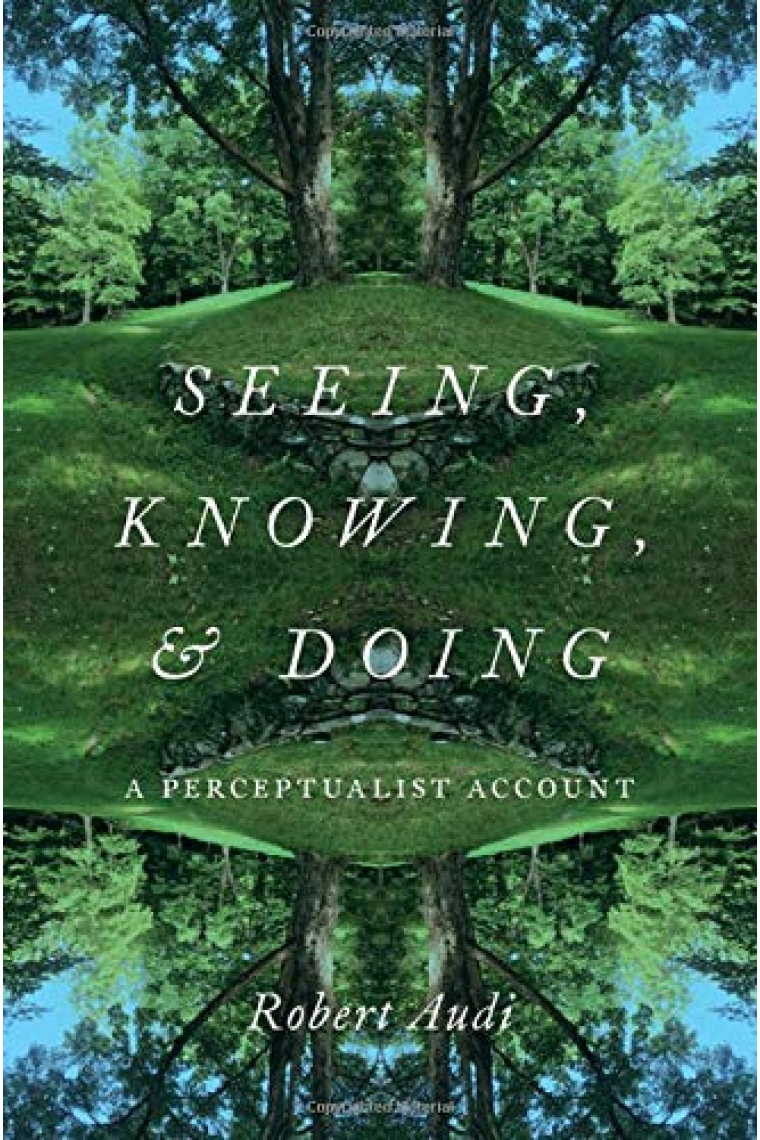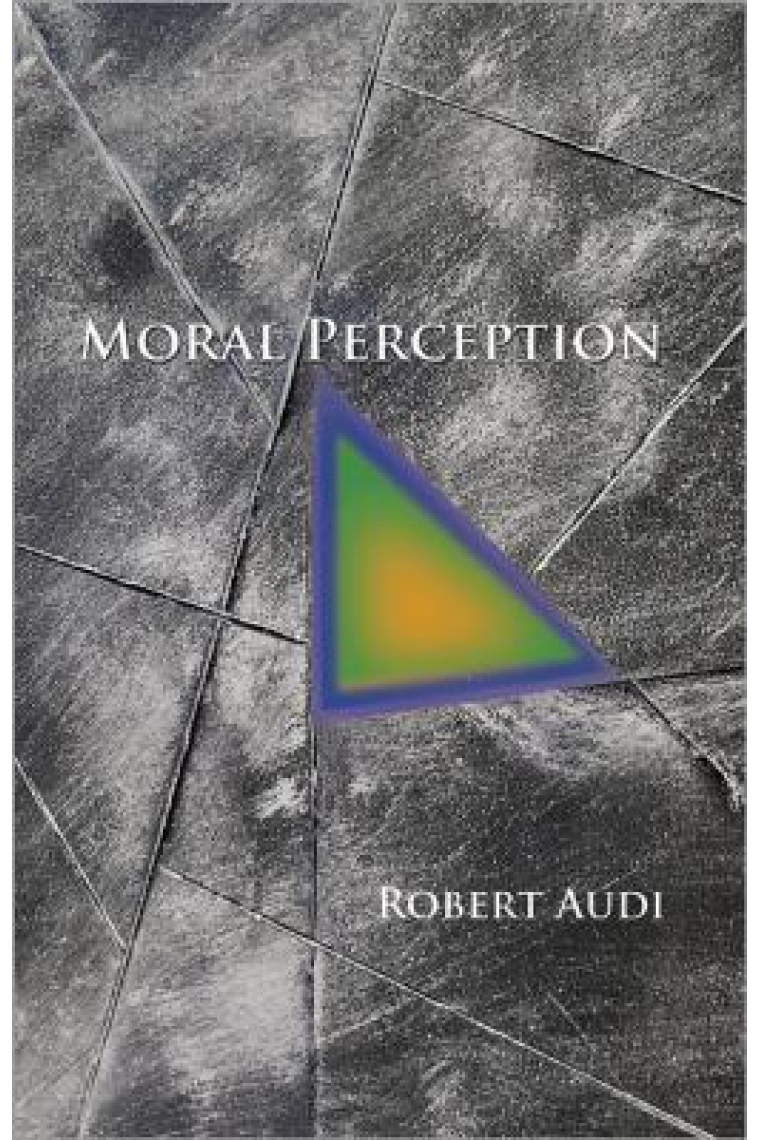Detalles del libro
Perception is basic for human knowledge and a major concern of both epistemology and the philosophy of mind. The scholarship in this area, however, has left two important aspects of perception underexplored: its relevance to understanding a priori knowledge-traditionally conceived as independent of perception-and its role in human action. This book provides a full-scale account of perception, a theory of the a priori, and an account of how perception guides action. In exploring perception and action, it clarifies the relation between action and practical reasoning, the notion of rational action, and the relation between knowledge of the practical (of how things are done) and practical knowledge (knowing how to do things).In the first part of the book, Robert Audi lays out a theory of perception as experiential, representational, and causally connected with its objects. He argues that perception is a discriminative response to its objects; it embodies phenomenally distinctive elements; and it yields rich information that underlies human knowledge. Part Two presents a theory of self-evidence and the a priori. Audi's theory is perceptualist in that it explicates the apprehension of a priori truths by articulating its parallels to perception. The theory also unifies empirical and a priori knowledge by clarifying their reliable causal connections with their objects-connections many have thought impossible for a priori knowledge. The final part explores how perception guides action, the role of propositional knowledge in our abilities to do what we know how to do, the nature of reasons for action, the role of inference in determining it, and the overall conditions for its rationality. Addressing longstanding questions left unaddressed in the current literature, Audi's comprehensive theory of perception will appeal to scholars and students interested in philosophy of perception, mind, and epistemology.
Preface and acknowledgmentsIntroductionPart One: PerceptionChapter 1 Perception and Perceptual Belief:Seeing and Knowing the Physical WorldI. Perception Broadly ConceivedII. Four Structurally Distinct Cases of PerceptionIII. The Representational Character of PerceptionChapter 2 Dimensions of Perceptual ContentI. Three Categories of Perceptual ContentII. Singular Reference and the Possible Role of Russellian PropositionsIII. Perception and Belief: Cognitive and Conceptual AspectsChapter 3 Perceptual Levels and their Action-Theoretic CounterpartsI. Perception and Action: the Structural AnalogyII. Constitutive Elements in the Visual Perception of Physical ObjectsIII. Awareness of Events and Abstract EntitiesIV. The Epistemological Significance of Perceptual LevelsV. Is Perception Theory-laden?VI. The Importance of "Background Beliefs" and Perceptual LevelsVII. Aspectual Perception, Inference, and RecognitionChapter 4 Perception as a Source of Knowledge and JustificationI. Perceptual KnowledgeII. The Hierarchical Character of PerceptionIII. Perceptual Justification: External and Internal DimensionsIV. The Perceptibility of Normative PropertiesChapter 5 Reasons, Perceptual Grounds, and Normative ExplanationI. The Diversity of Reasons for BeliefII. Reasons as Distinguished from GroundsIII. Reasons and Grounds for Belief: The Practical AnalogyIV. Reasons as ExplanationsV. Normative Reasons and their GroundsChapter 6 The Autonomy of JustificationI. Epistemological InternalismII. Does Knowledge Entail Justification?III. The Practice-Relativity of JustificationIV. An Integrated View of Knowledge and JustificationV. The Disjunctivist ChallengeVI. The Elusive Notion of the Content of Perceptual BeliefVII. Perception and Singular ReferencePart Two: Perception and the A PrioriChapter 7 Perception, Intuition, and ApprehensionI. Perception and IntuitionII. Structural Parallels between Intuitional and Perceptional DiscourseIII. Intuitions as Evidential Cognitions: Two Intuitionist TraditionsIV. Intuitions as ApprehensionsChapter 8 Toward a Theory of the A PrioriI. The Concept of Self-EvidenceII. Understanding as Central for Knowledge of the Self-evidentIII. Understanding and ImaginationIV. Major Elements in the Understanding of PropositionsV. Degrees of Understanding and Propositional JustificationVI. Comprehensional AdequacyVII. Obstacles to ComprehensionChapter 9 Apriority, Disputability, and NecessityI. Self-Evidence and ProvabilityII. Can Rational Disagreement Extend to the Self-Evident?III. The Self-Evident, the Obvious, and the CredibleIV. Apprehension of Abstract EntitiesV. Apriority and NecessityPart Three: Practical KnowledgeChapter 10 Knowledge, Belief, and ActionI. Belief and ActionII. Two Orders of Cognitive DispositionIII. Belief and Knowledge, Intention and ActionChapter 11 Knowing, Reasoning, and DoingI. Intellectualism as a Perspective on ActionII. Practical Knowledge and Knowledge of the PracticalIII. Virtual Knowledge: A Neglected CategoryIV. The Place of Knowledge in Practical ReasoningChapter 12 Inference and Its Role in Rational ActionI. Inference and Inferential BeliefII. Inference, Reasoning, and Premise-Based Belief-FormationIII. Reasoning and Rational ActionIV. The Scope of Rational ActionV. Intentionality, Knowledge, and AgencyConclusion
- Encuadernación Tapa dura
- Autor/es Audi, Robert
- ISBN13 9780197503508
- ISBN10 0197503500
- Páginas 248
- Año de Edición 2020
- Idioma Inglés
Seeing, Knowing, and Doing: A Perceptualist Account
- Robert Audi
- Editorial OXFORD U.P.
- ISBN 9780197503508
 ¡Gracias por comprar en librerías reales!
¡Gracias por comprar en librerías reales!

 Lo mejor de noviembre
Lo mejor de noviembre  Alibri Llibrería, Barcelona
Alibri Llibrería, Barcelona
 Librería Lé, Madrid
Librería Lé, Madrid
 Caselles Llibrería, Lleida
Caselles Llibrería, Lleida
















